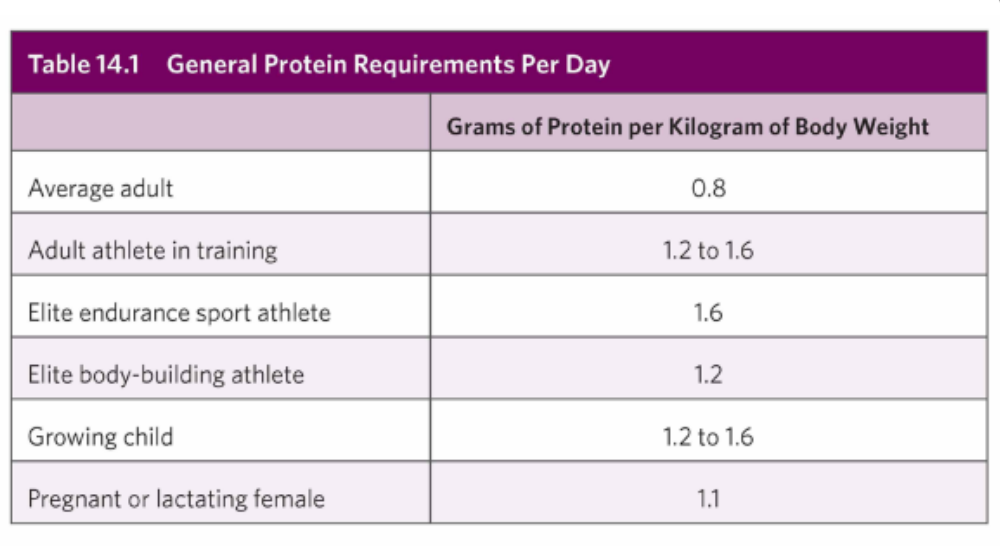14.1 - The Basics of Sport Nutrition (Terms)
Nutrients
The foods we eat are made up of different components that we call nutrients.
These nutrients are divided into two categories:
Macronutrients make up the largest part of the food we eat and supply us with the energy we need for daily life and physical exercise.
Micronutrients are found in small amounts in food.
They include vitamins and minerals, which help in energy transfer and tissue synthesis.
Carbohydrates, Proteins, and Fats
Macronutrients are the human body’s direct sources of energy:
Carbohydrates → 4 Calories per gram (kilocalories)
Proteins → 4 Calories per gram (kilocalories)
Fats → 9 Calories per gram (kilocalories)
Macronutrients supply us with the energy we need for daily life and physical exercise.
Vitamins and Minerals
Micronutrients act as co-agents in the bioenergetic process.
They do not provide energy themselves but rather play an indispensable role in helping the body’s metabolic processes along.
Vitamins help to regulate metabolic reactions in the body, in contrast to other dietary components which are utilized in the reactions.
Ex: Fats, Carbohydrates, and Proteins
Minerals are inorganic substances needed by the body for good health.
Besides helping the body get energy from macronutrients, minerals help produce bones, proteins, and blood.
Ex: Iron
Classifying Carbohydrates (“Carbs”)
Carbohydrates are divided into two main types:
Simple (Sugars) → Are digested and absorbed much more rapidly than complex carbohydrates and can cause large swings in our blood sugar levels.
Ex: Table Sugar, Soft Drinks, Fruit Juices, Honey, Processed Foods, and Junk Foods.
Complex (Starches) → Are digested and absorbed more slowly than simple carbohydrates.
As an added benefit, foods containing complex carbohydrates often contain many of the vitamins, minerals, proteins, and fibre that our bodies need.
The Glycemic Index
The blood sugar (or blood glucose) level refers to the concentration of glucose (sugar) present in the blood.
The body tightly regulates blood glucose levels.
The Glycemic Index is a measure that we can use to help us understand how foods will affect our blood sugar when we eat them.
This index indicates the rate of carbohydrate digestion and its effects on blood glucose levels.
“Empty Calories”
Refined sugars provide calories, but lack vitamins, minerals, and fibre.
For this reason, they are often called “Empty Calories.”
The extra calories are converted to fat and stored in the body as fat tissue.
Complex carbohydrates, such as fruits, grains, and vegetables, are considerably better for us.
Proteins: Essential “Building Blocks”
Proteins are molecules that make up a large portion of our body and they are involved in virtually all of our body’s cellular functions.
They are essential nutrients and the building blocks of body tissue.
The average adult body consists of 10 to 12 kg of proteins, which are mostly found in our muscles.
Proteins are directly involved in the fundamental chemical processes of life and they play important roles in how our bodies move and function.
Proteins can also serve as a fuel source (4 kilocalories per gram)
Amino Acids
Proteins are species-specific and organ-specific
Within a single organism, muscle proteins differ from those of the brain or liver.
When we eat foods that contain proteins, the body digests them and breaks them down into individual amino acids or small clusters of Amino Acids known as Peptides.
Amino acids are the building blocks of proteins.
Twenty different amino acids are used to create the more than 50,000 proteins found in the body.
Essential Amino Acids → 9 amino acids must be supplied by the foods we eat
Non-Essential Amino Acids → Our bodies can produce the other 11 amino acids
Daily Protein Requirements
Daily protein requirements differ from individual to individual, depending on the energy demands placed on each person’s body.

Dietary Fat: The Good and the Bad
Dietary fat is important for our overall health, but some types of fat should be limited.
There are four types of fat, in two broad groups:
Unsaturated Fats:
Mono-Unsaturated
Polyunsaturated Fats
“Good” Fats
Saturated Fats:
Saturated
Trans Fats
“Bad” Fats
The Unhealthiest Fat of All
Nutritionists all agree that the worst type of dietary fat is the kind known as trans fat.
Trans fat results from a process called hydrogenation.
This process turns oils into solids.
It also makes healthy vegetable oils behave more like saturated fats.
On food label ingredient lists, this manufactured substance is often listed, somewhat innocuously, as “partially hydrogenated oil.”
Staving off Heart Disease
Diets high in saturated fats have been linked to heart disease and vascular disease, leading to an increased risk of heart attacks and strokes.
Diets rich in unsaturated fats are not believed to increase the risk of heart and vascular disease, as there appears to be less fat deposited in the coronary arteries.
Nutrition experts now recommend that we replace saturated fats (and trans fats) in our diet with mono- and polyunsaturated fats.